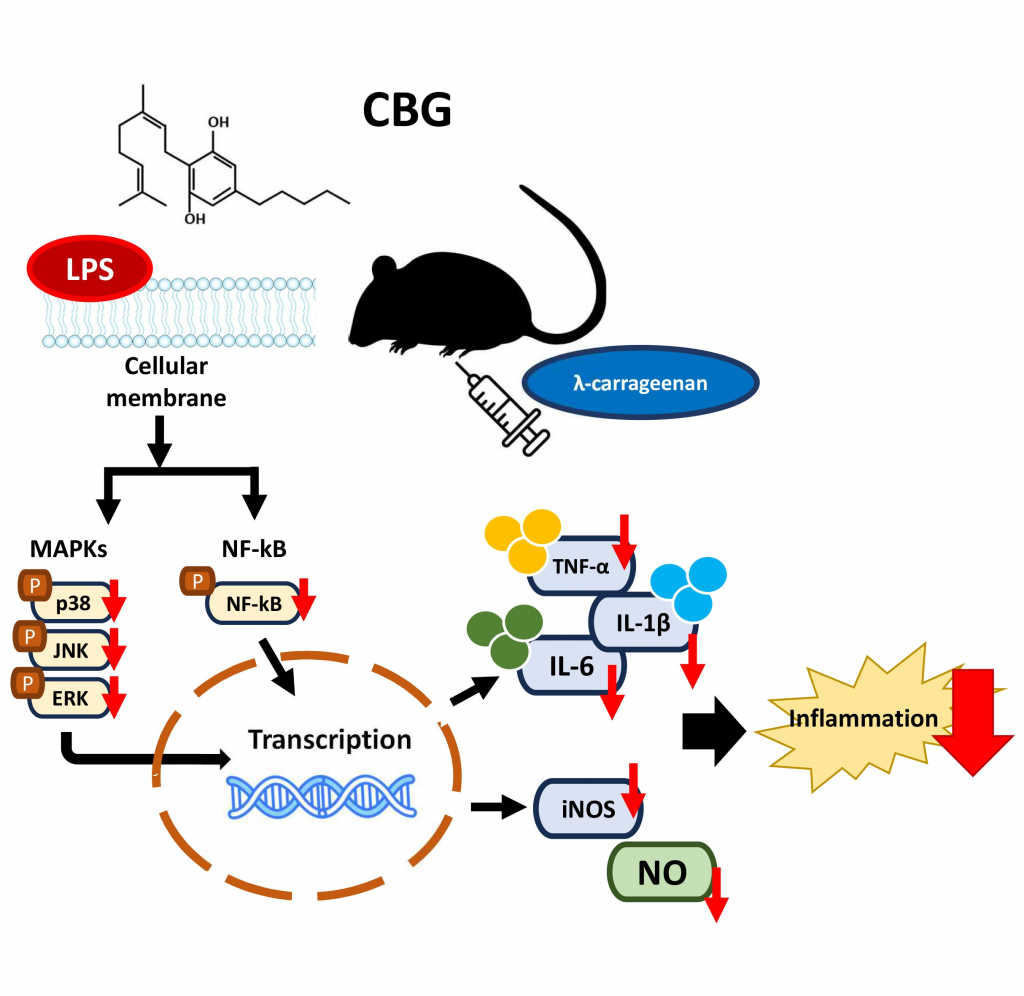
“Cannabis sativa L. has a long history of use and contains more than 80 cannabinoids. However, although cannabigerol (CBG), which acts as a biosynthetic precursor of its most abundant phytocannabinoids, has anti-inflammatory effects, the exact mechanism of action remains underexplored.
In this study, we explored the anti-inflammatory potential of CBG to assess its potential for therapeutic and industrial applications.
CBG was extracted from the cannabis cultivar ‘Pink Pepper’ In vitro assays were performed via RAW 264.7 mouse macrophages stimulated with lipopolysaccharide, and in vivo efficacy was evaluated through a carrageenan-induced paw edema mouse model to confirm the activity of CBG in acute inflammation.
Nitric oxide production, mRNA, and protein expression of inflammatory mediators were suppressed by CBG treatment in a process downregulated through the MAPK and NF-κB pathways. Although paw edema was not statistically significantly reduced, oral administration of CBG suppressed the expression of COX-2, iNOS, TNF-α, IL-1β, and IL-6 in the carrageenan-induced mouse model.
CBG has been demonstrated to exert significant anti-inflammatory effects via modulation of key inflammatory mediators and signaling pathways in both in vivo and in vitro models.
Our findings further support the potential of CBG as a bioactive compound for further anti-inflammatory research.”
https://pubmed.ncbi.nlm.nih.gov/41423277

https://www.jmb.or.kr/journal/view.html?doi=10.4014/jmb.2509.09034










